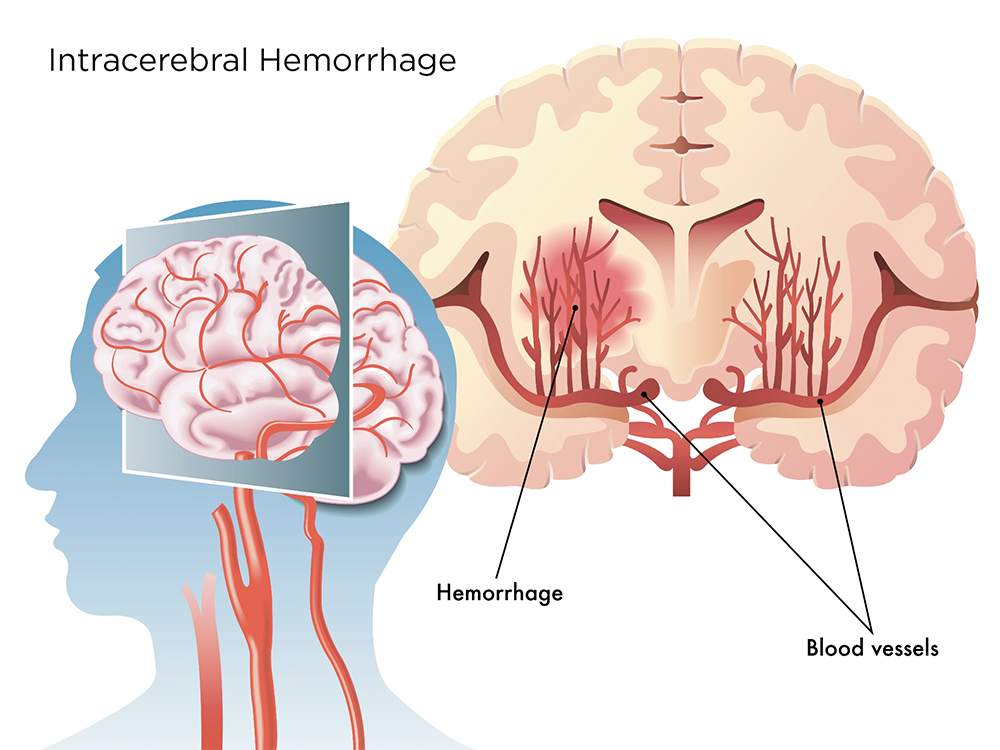Intracerebral hemorrhage (ICH)

Introduction
Intracerebral hemorrhage (ICH) is a type of stroke caused by bleeding directly into the brain tissue. It accounts for approximately 10-15% of all strokes and is associated with high morbidity and mortality. ICH occurs when a blood vessel within the brain ruptures, leading to blood accumulation, increased intracranial pressure, and damage to surrounding brain tissue. Understanding the causes, symptoms, treatment options, and preventive strategies is critical for managing this life-threatening condition effectively.
Causes of ICH
- Hypertension (High Blood Pressure): The most common cause of ICH, as sustained high pressure weakens blood vessel walls over time.
- Trauma: Head injuries resulting from accidents or falls can lead to ICH.
- Cerebral Amyloid Angiopathy: Common in the elderly, this condition involves protein deposits in the blood vessel walls, increasing the risk of rupture.
- Aneurysms and Arteriovenous Malformations (AVMs): Structural abnormalities in the brain's blood vessels can predispose them to rupture.
- Blood Disorders and Anticoagulants: Conditions like hemophilia or the use of blood-thinning medications can impair clotting and lead to bleeding.
Diagnosis of ICH
- Clinical Assessment: A thorough neurological examination helps assess the extent of deficits.
- CT Scan: The gold standard for quickly identifying the location and size of the bleed.
- MRI: Offers detailed imaging of soft tissues and can provide additional information.
- Laboratory Tests: Blood tests, including coagulation profiles, to evaluate clotting ability.
Recovery and Rehabilitation
- Speech Therapy: To regain motor skills and improve strength.
- Medications: For patients with communication or swallowing difficulties.
- Occupational Therapy: To assist in regaining independence in daily activities.
- Psychological Support: Counseling for emotional and cognitive recovery.
Conclusion
Intracerebral hemorrhage is a medical emergency requiring rapid diagnosis and comprehensive management to minimize brain damage and improve outcomes. Advances in imaging, surgical techniques, and post-stroke rehabilitation have significantly enhanced the care of patients with ICH. Preventive measures, especially controlling hypertension and avoiding risk factors, remain key to reducing the incidence of this devastating condition.
